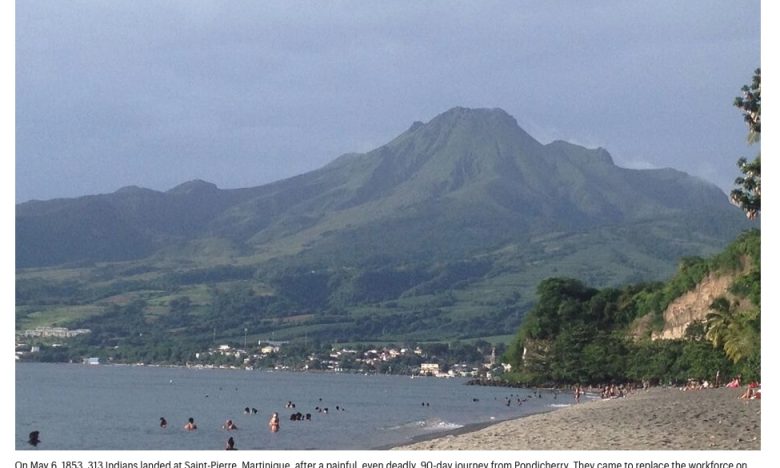MARTINIQUE, February 2, 2023 (Le Parisien, Google translated from French): Initially, there were only three hundred–313 Indians to be exact–who landed on May 6, 1853, in Saint-Pierre, Martinique, after a painful, even fatal, journey of 90 days from Pondicherry. They came to replace the workforce on the farms deserted by the former black slaves. They will be followed by 25,000 others to Martinique, 42,000 to Guadeloupe, and thousands more to Guyana. One hundred and seventy years later, the Indians of the West Indies continue to shape the overseas territories as they exist today, and will celebrate their courageous ancestors on March 6 in Trinidad. During the Pongal festival, the Hindu temple of Galion opens its doors to the public.
Their story begins with the abolition of slavery in 1848. The now former slaves abandoned the sugar cane fields and Indians are recruited to replace them. They were promised that they would find wealth and freedom in the West Indies. In reality, “those who landed on the sugar islands, to be candid, were going to have to suffer the oppression of the master colonists,” notes Jean Samuel Sahaï, the Guadeloupean author, himself a descendant of Indians, of the book Adagio pour la Da, published in 2013. The essayist recounts the contempt of the settlers, like the New Frees, for the Indians, who are herded into the buildings of slaves and victims of physical abuse. Once their five-year contracts are over, 40% of them return to Pondicherry, when those who remained start fighting. Among the most determined, Henry Sidambarom “particularly defended the cause of the Indians of Guadeloupe.” Born in 1863, he became the first politician descended from Indians and, on April 21, 1923, obtained French nationality for all Guadeloupean workers of Indian origin. In 1924, the measure applied to neighboring islands.

